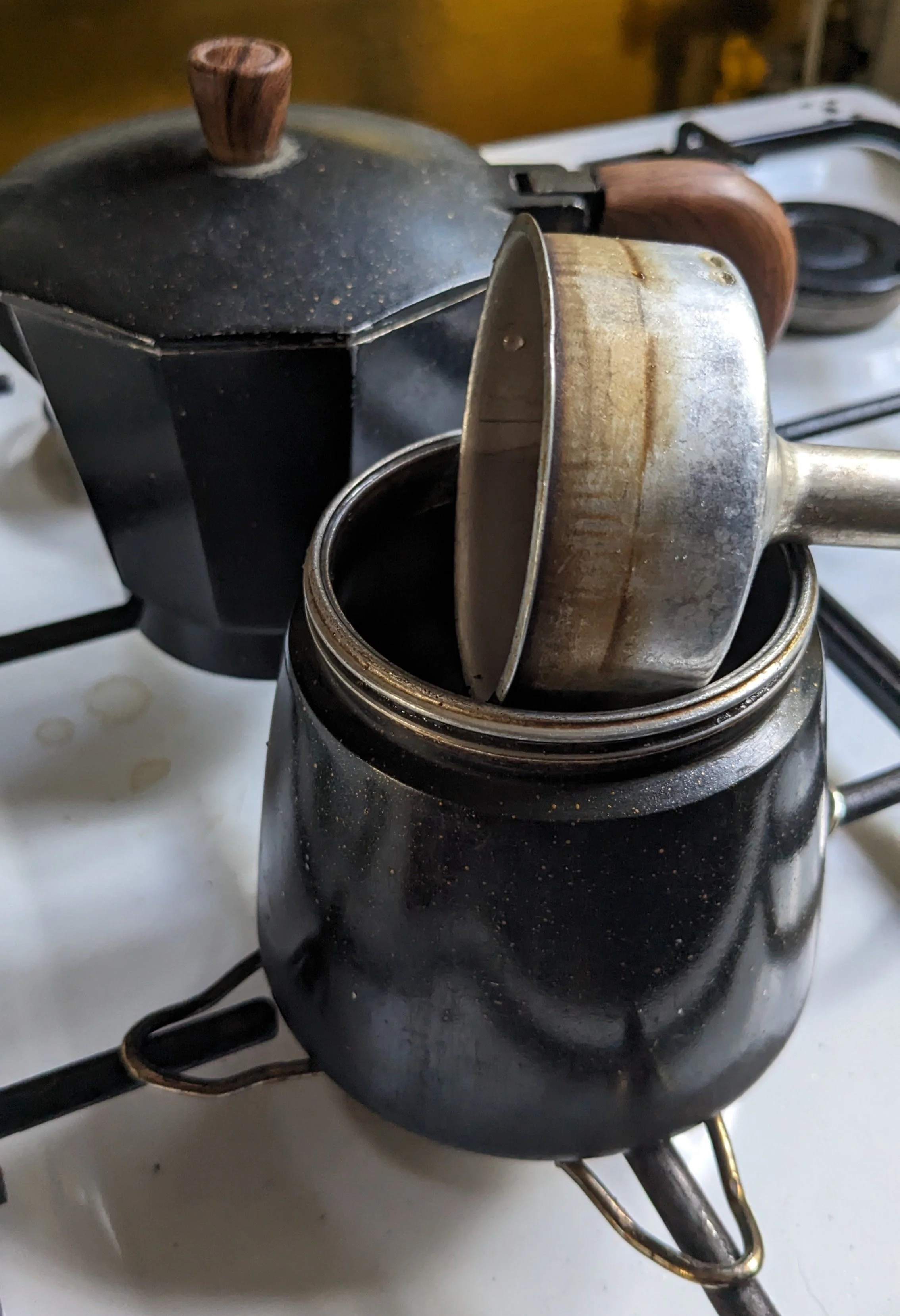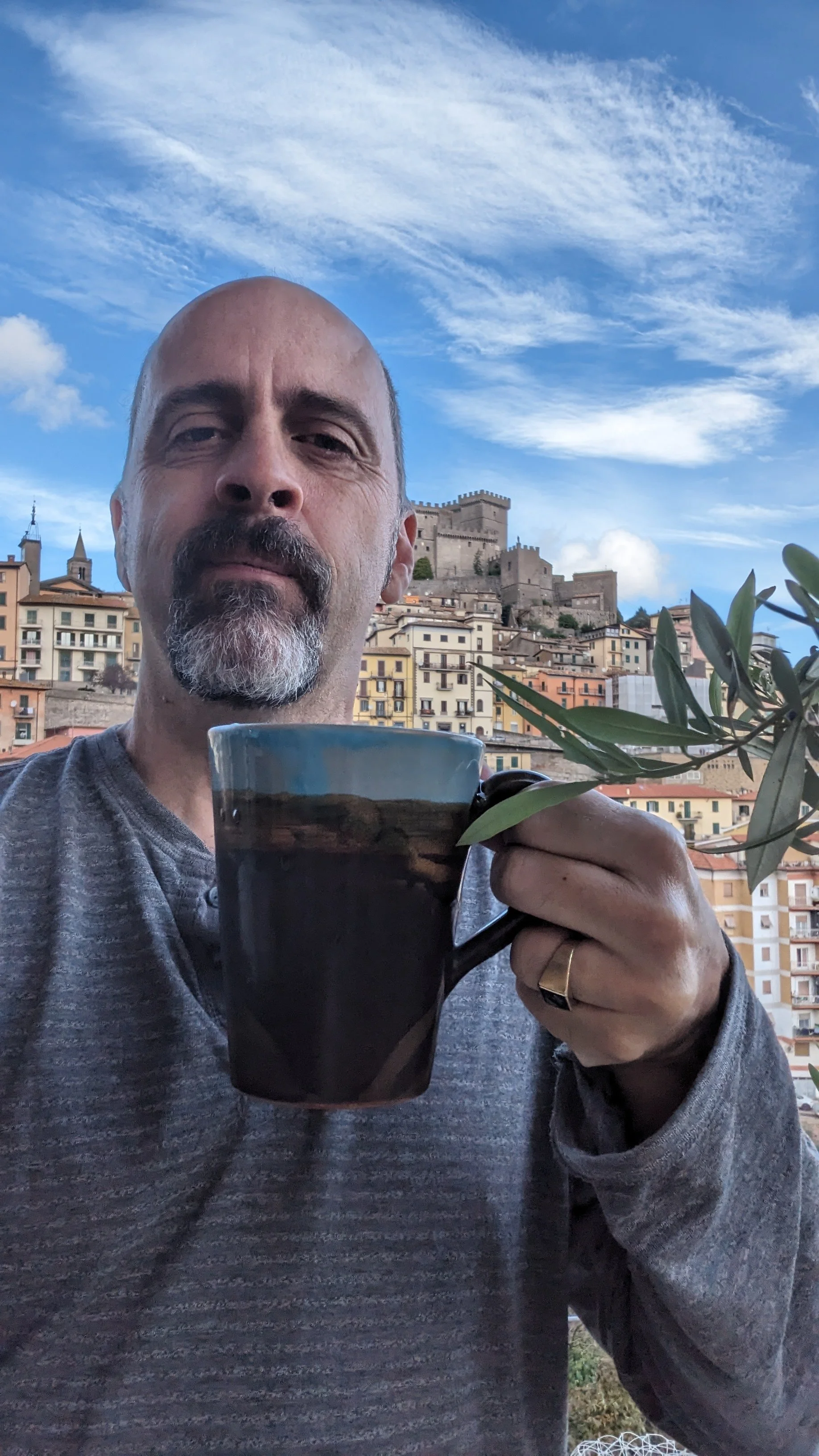The Humble Moka Pot (...that's "Moka" not Mocha")
/If you visit Italy, you’ll doubtlessly get an espresso at a bar any number of times - it’s one of those iconic, Insta-glam moments.
the moka pot, disassembled (note the 4-point burner attachment on the stove)
But if you spend a little more time here, you may find yourself in a vacation rental or apartment, in which you’ll likely find the ubiquitous Moka pot - the aluminum stovetop coffee cooker invented in Italy in 1933. Every household has one - or two, or three, of varying sizes.
These pots can be found in 3-cup, 6-cup, 8-cup, 10-cup, 12-cup, and 18-cup sizes - shots, that is, not baking measurement cups. (Think the tiny espresso cups you see in an Italian bar.) In our little house we typically use a 6-cup pot.
Each morning we split one pot, three shots apiece, cut with with a little milk heated in a pentolino after we take the coffee off the flame.
Here’s how to use the Moka pot:
Fill the bottom chamber (the cylinder) with water, up to but not above the valve on the side.
Put the funnel basket in place, and fill with coffee, without tightly packing or tamping. (The degree of tamping is the subject of some debate.) We buy bricks of coffee specifically ground for caffe Moka; or you can grind your own. (Again, opinions vary widely on what’s the “right” grind; we don’t wade into such debates.)
Screw on the top chamber (the coffee collector), snug but not too tight. Put it on the stovetop flame and wait.
When the coffee starts to well up through the column, keep an eye on it. As it fills up the collector, it will begin to bubble more vigorously. When it’s getting full and the emerging coffee is on the verge of erupting, close the lid and remove the pot from the flame. (This is when I put our pentolino on the burner, to warm up the milk a bit.) Let it finish percolating with its own heat, off the flame.
As we’re splitting the pot between two coffee mugs, I like to give it a stir in the pot with a spoon before pouring. The coffee tends to settle a bit while it sits, so we want a homogenous mix in both mugs.
Add your milk to taste. Sometimes I froth up the milk with a little mixer to approximate a cappuccino effect, but usually I’m too lazy, so we just call it a sort of caffe latte and drink it as is. We don’t use sugar in our morning coffee.
A couple of things to note about using the Moka pot:
The coffee made in these pots can come out stronger than espresso, depending on the ratio of water to ground coffee, and on the point at which you remove the pot from the flame.
Conventional wisdom holds that the Moka pot shouldn’t be washed with soap of any kind - only clean it by hand and using only water. Otherwise the metal retains a bit of the soap residue and it taints the coffee in the next cook.
For the smaller pots, on a gas stove, you may need the little 4-point “star” attachment to make the right size platform for the pot to sit on over the flame.
Lastly, remember: “Moka” has nothing to do with “mocha” as Americans know the word - there’s no chocolate or cocoa involved. Just VERY strong coffee to get your day started with a little jolt.










